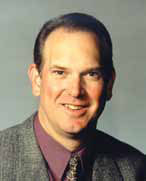Pilots use a lot of terms to describe the laws and forces of nature that either work for or against them during flight. I earned my pilot wings last June in Phoenix, AZ. It was hot, and the concept of density altitude conspired against me. The dense, hot air, especially at higher altitudes, required longer take off runs and slowed down my rate of climb to cooler heights. Once in the air I would hope for light turbulence, especially if I had passengers. Air is always moving and the winds at various altitudes affected my travel time, which impacted the amount of fuel I might have to burn to reach my destination.
Today, when we fly from Phoenix to our office in Santa Fe, NM, the tailwinds can be as high as 70 knots, increasing our ground speed and making the trip shorter by 30 to 40 minutes. But we have to come home, and those same winds are now headwinds. You better use the bathroom before you leave under those conditions.
Pilots undergo rigorous and ongoing training to develop their skills and understand all the complex systems and forces that can mean the difference between a safe flight and a dangerous one. When you learn to fly, you quickly learn what you can control, and more importantly the great number of things you cannot control. Pilots don’t get to insist the wind blow straight down the runway (the optimal direction). Most times the wind blows across the runway (not optimal), so pilots train to handle crosswind landings, and before they land they get a briefing from the airport tower so they know exactly what to expect during the approach.
During 2010 and 2011 the term headwinds was a concept our business began using to describe the many forces we could not control. Economic recession, restricted credit and more rigorous reporting, rising health care costs, mounting regulations, lack of consumer confidence, declining property values, and rising gas and material prices are a few of the obvious headwinds. Oh, and as we begin 2012 with a little glimmer of hope like improving backlogs, slightly declining unemployment, finding the bottom of property values, and an uptick in consumer confidence, we now face the real possibility of a European recession that could unravel everything.

It’s no wonder new small business starts are stagnating. Who would want to start a business in this economic climate? What do you think all of this news is doing to the morale and confidence of your staff? Could it be impacting productivity? Does everyone seem to have a short fuse and do your customers seem less reasonable than normal? More headwinds.
Did you know there are less than 600,000 pilots in the United States? That’s less than three percent of the U.S. population. Running a business is not for everyone either. It takes professional management to guide any business in today’s environment. Pilots are required to continue to demonstrate proficiency to remain current. They have to undergo regular physicals to make sure they are healthy and they have to stay current with training and undergo periodic flight reviews by licensed instructors to ensure competency. Most business professionals have no such requirement. But the ones that survive and thrive continually invest in their professional development and that of those they depend most closely on.
The only way to pilot a business in today’s uncertain climate is to be very aware of the everchanging conditions we cannot control (headwinds) and continually hone our business and management skills to plan, react, and limit the impact of headwinds on our business flight path. Of course, most pilots don’t fly entirely by themselves all the time. They are supported by mechanics, air traffic controllers, weather experts, and co-pilots on more sophisticated aircraft. The really good ones use every resource at their disposal to limit risk and improve flight efficiency. Okay, enough of the comparison between pilots and business leaders.
Congratulations. You’re still here while many of your competitors are not. You might think you have survived the worst of the storm and now it’s time to grow again. In 2012, become a consumer of information from sources you can trust like NSC A and its Business Leadership Conference (co-sponsored by SCN), your local Chamber of Commerce, banking institutions, and networking groups. The better you understand the flight systems of your business and learn how to forecast the headwinds in your future, the more you are likely to be labeled a successful business leader in 2013 and beyond.
Mike Bradley (mcbradley@safeguard.us) is president of Safeguard Security and Communications, a security and communication systems integrator in Phoenix, AZ. Bradley is a past president and director on the NSCA board.
InfoComm Provides Industry Snapshot
InfoComm International’s latest Economic Snapshot Survey, released in October 2011, uses two indices to summarize the industry’s health—the InfoComm Performance Index (IPI) and the InfoComm Demand Index (IDI). Both are packed with vital data points, ranging from employment statistics to economic confidence by region to overall impressions of the general economy.
While the report, a detailed 48 pages, deserves a thorough once over by everyone involved in the industry, some key takeaways follow:
- * Smaller AV companies are somewhat pessimistic about economic issues and conditions.
- * Demand among end-users is softening, as is their confidence in the overall economy.
- * Improvements are being seen in key business strategy indicators related to compensation, staff cuts, and training.
- * While the overall industry’s health is improving, the present data suggests that there will be an extended convalescent period.
- * Strong, consistent gains are not expected in the early part of 2012.
- * Markets outside of North America and larger companies in the industry continue to be bright spots.
- * While optimism in the industry may be wavering, most believe in the strength of their own company.
- * The tipping point of sustained industry improvements won’t occur until confidence in conditions beyond their control matches the confidence they have with their own company’s operations.
—Chuck Ansbacher
